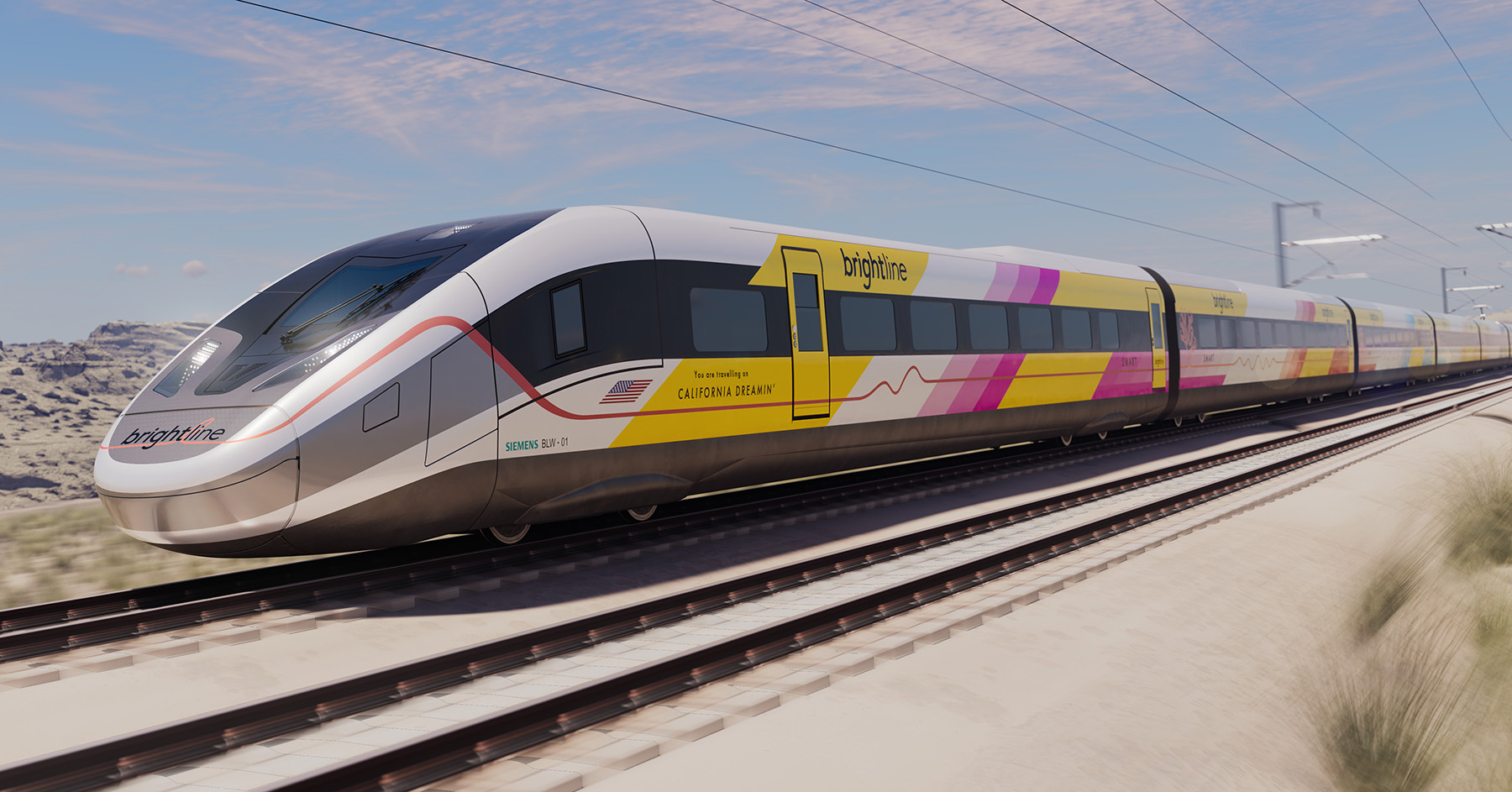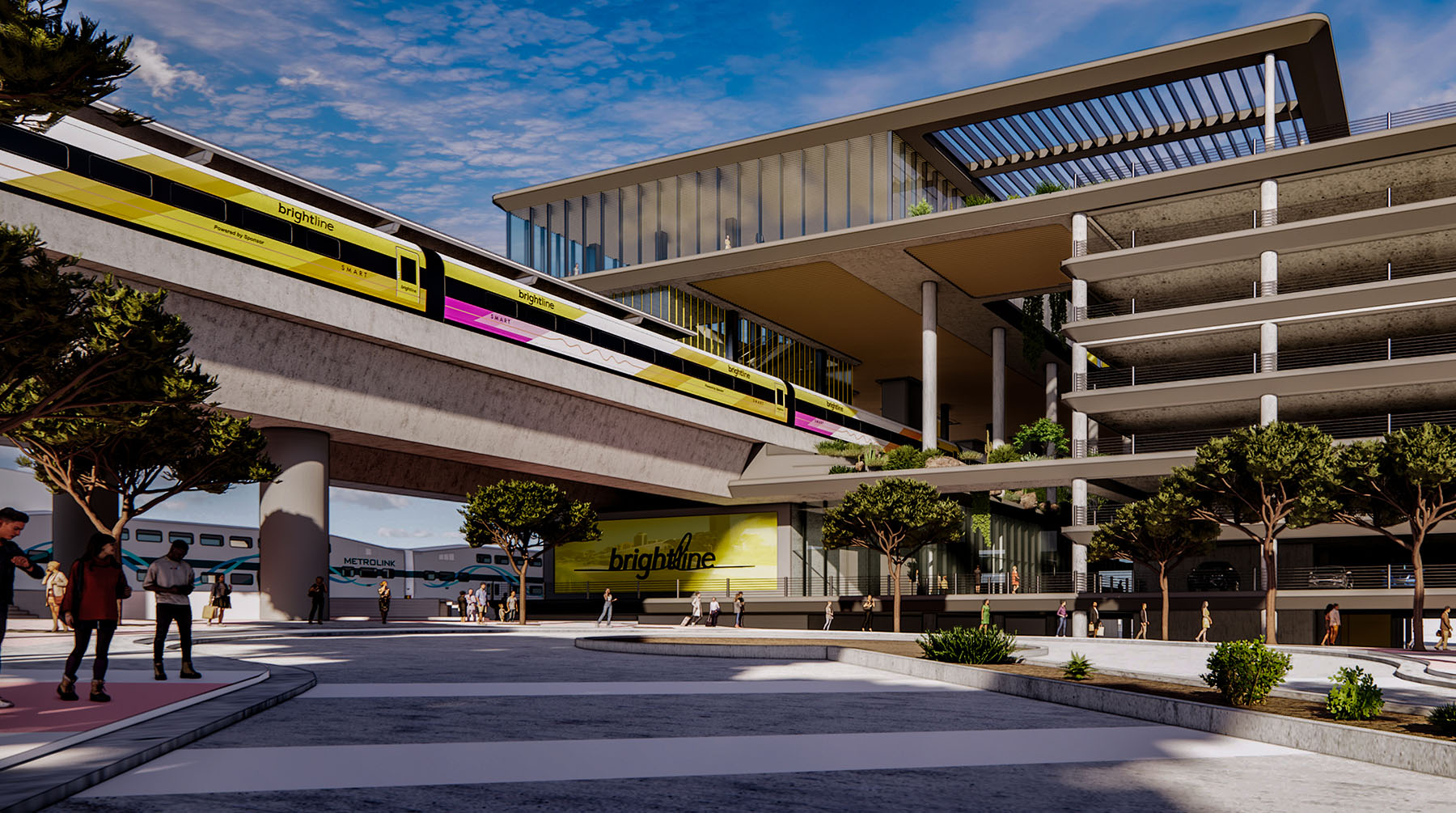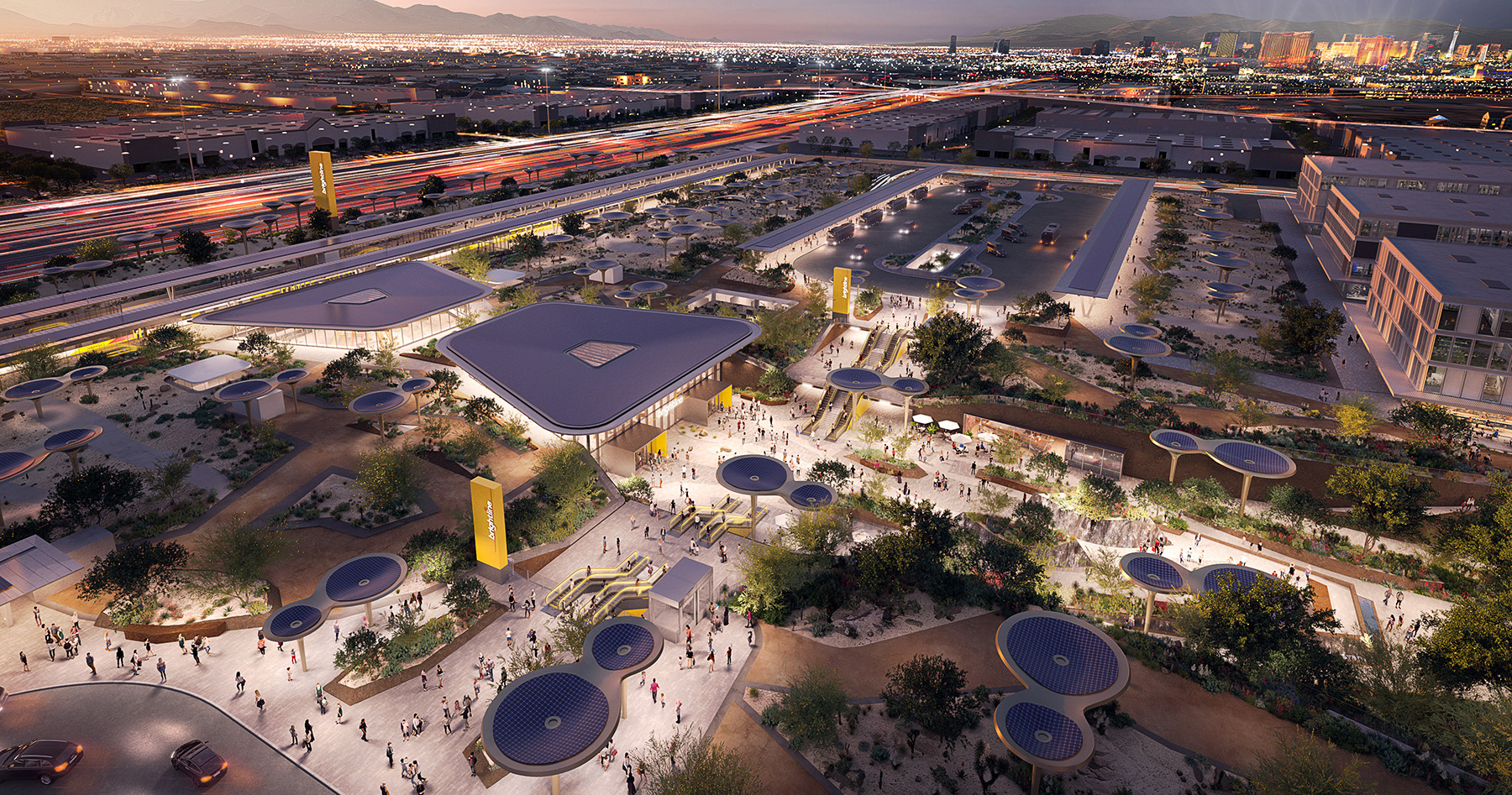
About 40% of the 40 million travelers who visit Las Vegas each year arrive from Southern California. Many come to Sin City on Interstate 15, which rises out of metro Los Angeles over the imposing Cajon Pass before traversing the desolate Mojave Desert. This stretch of interstate is infamous for lines of traffic heading between the cities.
A July crash of a truck carrying lithium-ion batteries, which subsequently caught fire, shut down the freeway for 44 hours. There are very few alternate routes.
Further reading:
- Northeastern US rail infrastructure to be transformed
- American Rescue Plan Act provides billions for transit, rail, airports, and water
- Hyperloop faces challenges as it attempts to get back on track
That may be about to change. After years of false starts and planning, Brightline West, the United States’ first true high-speed rail system – defined as being capable of traveling faster than 186 mph – is getting ready to start construction to link the Los Angeles metropolitan area to Las Vegas and, perhaps, usher in a new age of high-speed train travel.
Brightline’s fully electrified trains, with speeds topping 200 mph, are expected to make the 218-mile train trip in two hours (a trip that typically takes more than three hours by car). The system, with an estimated cost of $12 billion, received a $3 billion federal grant last year and has issued $3.5 billion in private activity bonds. Additional debt and equity, which Brightline says it’s in the process of procuring, will make up the balance.
In California, the train will terminate in suburban Rancho Cucamonga, where travelers can connect to LA’s Metrolink light-rail system and continue to Union Station in downtown Los Angeles. In Las Vegas, the train will end a few miles from the hotel casinos of the Strip. There will be an intermediate station in Victorville, California – just north of the Cajon Pass – plus a maintenance facility outside Las Vegas.

Mike Reininger, CEO of Brightline Holdings, says the train will offer a stress-free ride for passengers that will feature a “spectacular landscape experience.”
Preparing the route
Most of the line will run through the wide I-15 median; the track will be about 80% single track and 20% double track. “It helps us keep the maintenance cost of the project in check,” Reininger said, “and it helps us build a profit incentive business where we can actually make money from the operation and not require ongoing public sector subsidies.”
The civil engineering work is being handled by HNTB along the California portion of the route and by Jacobs on the Nevada side. The civil scope of the engineering work will consist of four major categories: grading and drainage; structural work, such as new bridges and retaining walls; highway lane and off-ramp modifications; and installing the track and communication systems.
James Van Wormer, P.E., vice president and senior project director at HNTB, says his company is working with Brightline on the preliminary design of Brightline West. HNTB has collaborated with Brightline and emergency providers to put 14 “emergency overhead crossovers that will suffice not only for the emergency vehicles, such as fire trucks, highway patrol (vehicles), and ambulances to be able to access either side of the highway at strategic locations, but also in cases of incidents where you have to actually move traffic.”
Brightline West will also introduce a signaling system, referred to as positive train control, that uses sensors to monitor the locations, speeds, and stopping distances of trains on the line.
This technology senses when something “in the system is not correct – a switch is not properly thrown, a train coming in the opposite direction is not where it needs to be,” Reininger said. “The nature of positive train control is that it takes the interface out of human hands and takes control of the train to stop it so that there isn’t a bad outcome there.”
End-to-end comfort
The Las Vegas station is planned for a 110-acre site a few miles south of the Strip. Andrew Byrne, managing partner of the Los Angeles studio of Grimshaw, the firm designing the Brightline stations, said both terminus stations would serve as “a hybrid between an effective, highly functional, and operational mass transit environment but also with an overlay of hospitality and leisure.” The Vegas station will afford designers the chance to craft outdoor-oriented spaces that can connect visitors to Las Vegas’ singular sense of place.

Designers want to create a “proud, civically minded building,” Byrne says, evoking – but not mimicking – great American train stations like the Union Stations in Washington, D.C., Denver, and Los Angeles. “How do we deliver the same sense of identity and pride within a contemporary architectural language that is also something that feels right for Brightline’s identity as a company and as an operator?” Byrne asked.
A tight footprint at Rancho Cucamonga, meanwhile, where tracks will enter the planned station on a viaduct 30 feet above grade, has led designers to propose a unique “vertical typology,” where ticketing and baggage are on the lower level, train platforms are on the middle level, and a lounge experience with panoramic views of the San Gabriel Mountains is on top. The approach is meant to improve wayfinding and prevent the crossflow of arriving and departing passengers.
The challenges of high-speed rail
Brightline and its supporters suggest the LA-Vegas line could be the tipping point to attract the attention of Americans. Andy Kunz, president and CEO of US High Speed Rail Association, a national trade organization and advocacy group, praised the “exceptional service” on a recent trip aboard Brightline’s train service in Florida. “They’re going to go crazy and just say, ‘Why are we still dealing with delayed flights and congested freeways? This is absurd.’ And we feel that that’s when there’s going to be a huge tipping point, once people can actually see a 200 mph train in Vegas.”
The Infrastructure Investment and Jobs Act, passed in 2021, allocated $66 billion in rail funding, including upgrades to conventional rail lines on the East Coast, improvements at Chicago’s Union Station, and high-speed rail projects in California – including the grant for Brightline West.
In recent years, ideas for high-speed rail lines have been proposed in many parts of the country – projects in the Pacific Northwest, a Midwest hub-and-spoke system centered around Chicago, a Southeast line, and in Texas, a 240-mile line linking Dallas and Houston. California is building a line between San Francisco and Los Angeles/Anaheim – but the extremely slow pace and exorbitant costs suggest that ramping up high-speed rail will not be easy.
According to the Los Angeles Times, cost estimates for the LA-San Francisco line have already topped $100 billion, with no clear source of funding and no timetable for completion. Even a portion of that line under construction, a 171-mile stretch in California’s Central Valley between Merced and Bakersfield, isn’t scheduled to open before 2030 and will cost $35 billion.
Brightline has had success with a line from Miami to Orlando International Airport, at speeds of around 125 mph. Since Brightline debuted its initial Florida line in 2018 – between Fort Lauderdale and West Palm Beach – and added subsequent service to Miami and, in September 2023, the Orlando airport, total ridership on the private system is projected to reach 5.5 million passengers in 2024.
Pricing has not been announced for the LA-Vegas line, but high-speed rail systems around the world typically price fares between 50 cents and $1 a mile. The train line held a ceremonial groundbreaking in April and is expected to start formal construction by next year. The line will open service by the end of 2028.

Rick Harnish, executive director of the nonprofit High Speed Rail Alliance, says the $66 billion federal investment in rail is a start but not enough. “If we want high-speed rail, the next administration is going to have to take the progress from the Biden administration and ramp it up another notch,” he said.
Kunz echoes Harnish about the need for robust federal support to kick-start a high-speed rail industry. Kunz says a high-speed rail network could help address climate change and even affordable housing by linking affordable communities to more distant job centers. He also says that building out a nationwide network will take time and should initially prioritize linking major cities that are 400 miles apart or less – the distance at which high-speed rail can compete with airplanes.
“We didn’t start out with a whole 40,000-mile highway network,” Kunz said. “We built it over 30 years piece by piece by piece. I’m sure (in) some of those early years, some of it didn’t even look like it made any sense. There were pieces that were isolated and pieces that didn’t connect with other pieces, but eventually it all came together and made total sense.”
“We think about it as the dawn of a new industry,” Reininger said, “that this is the first of a series of high-speed rail connections in the transportation infrastructure space that we think will evolve in the United States.”



